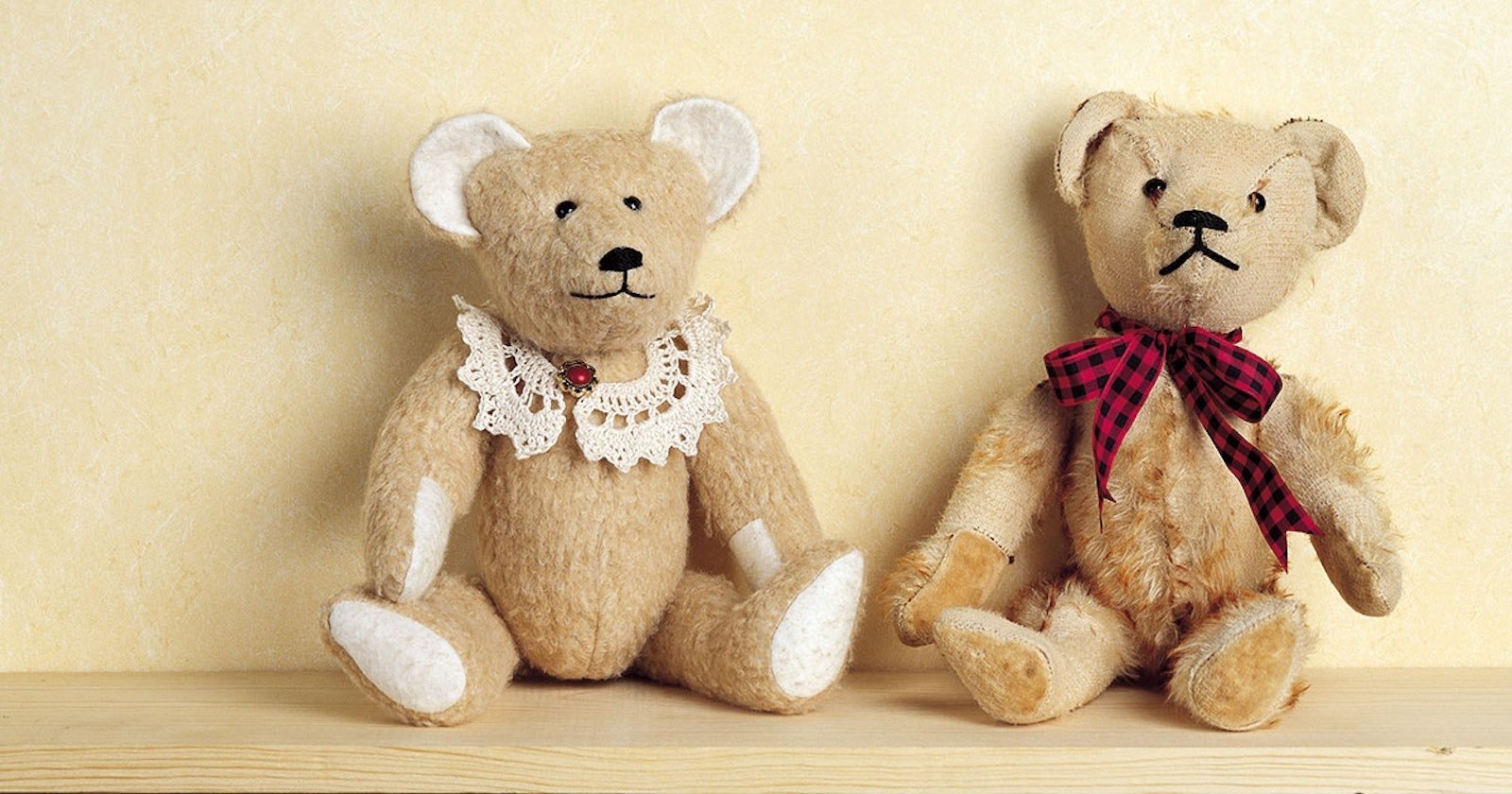On this day, February 15, 1903, Morris Michtom (1870–1938) put a teddy bear made by his wife, Rose (1867–1937), in the window of their small candy and toy shop in Brooklyn. The rest, as they say, is history. Teddy bears became, and remain, a mainstay for children around the world. In 1907, the couple founded the Ideal Novelty and Toy Company.
Needlework Connection to the Date
A cartoon depicting President Teddy Roosevelt refusing to shoot a trapped bear during a hunting trip to Mississippi served as inspiration for “Teddy’s Bear.” Rose Michtom created the stuffed “teddy bear” from velvet with shoe-button eyes.
Initial reaction to the bear was amazingly positive—numerous customers wanted to purchase one. Morris, not wishing to offend the president by using his name, contacted Roosevelt. According to several accounts, Roosevelt is said to have replied that he didn’t think his name would help, but the Michtoms were free to use it.
The cartoon that started it all was by Clifford Berryman, a Pulitzer Prize–winning cartoonist. The cartoon originally ran in the November 16, 1902, edition of The Washington Post, and you can see it on the Teddy Roosevelt Birthplace website.
One of the original bears was donated to the Smithsonian in 1964. To see it and read about its long journey, visit their website.
And in the September/October 1998 issue, we introduced PieceWork’s traditional American Teddy Bear. Kathy Williams, who was PieceWork’s craft editor, created the bear. Here’s Kathy:
- Early American teddy bears had a triangular face, wedge-shaped muzzle, humpbacked body, long tapering arms, and unique oval pointed feel. Most had shiny black shoe-button eyes. These bears were not labeled, making identification difficult. A dilapidated teddy bear with early American characteristics that I purchased at a local antiques store was the inspiration for this traditional American Teddy Bear. This obviously well-loved bear (shown at right in the opening photo) had little remaining fur and showed evidence of prior repair work. The use of “sub” or textile waste as stuffing material in the arms and legs and two-toned mohair plush fabric date the bear to during or shortly after World War 1 (1914–1918). By the mid-1920s, American teddy bears had smaller, rounder heads and circular feet. Shoe buttons had been replaced by glass eyes.
Download the digitial edition of the September/October 1998 issue for Kathy’s step-by step instructions and patterns for making the 13-inch (33-cm) bear.
Also, remember that if you are an active subscriber to PieceWork magazine, you have unlimited access to previous issues, including September/October 1998. See our help center for the step-by-step process on how to access them.
The materials and complete instructions for making the bear’s sweet crocheted collar are below.
 The crocheted collar made for PieceWork’s traditional American Teddy Bear
The crocheted collar made for PieceWork’s traditional American Teddy Bear
Crocheted Collar
The finished collar is 1¾ x 7 inches (4.5 x 18 cm) and fits a 13-inch (33-cm) bear.
Materials
- Metal crochet hook #5
- DMC Pearl Cotton, 1 ball size size 5 Ecru
- Button for closure
Instructions
Ch 56, turn.
Row 1: Beg in the 11th ch from hook (makes button loop) sc to end of ch, ch 2, turn.
Row 2: Dc in 1st st from hook, dc to end of row, ch 2, turn.
Row 3: Dc in 1st st, *sk 2 sts, ch 2, dc; rep from * to end of row, dc twice in last st, ch 2, turn.
Row 4: *5 dc in sp, sc in dc of previous row; rep from * to end of row, ch 1, turn.
Row 5: *Sc, dc, dc, make picot (ch 3, sl st into top of dc just worked), dc, sc; repeat from * to end of row. Finish off.
Sew a button at the end of the collar opposite the button loop.
Originally published February 4, 2019; updated February 15, 2023.

